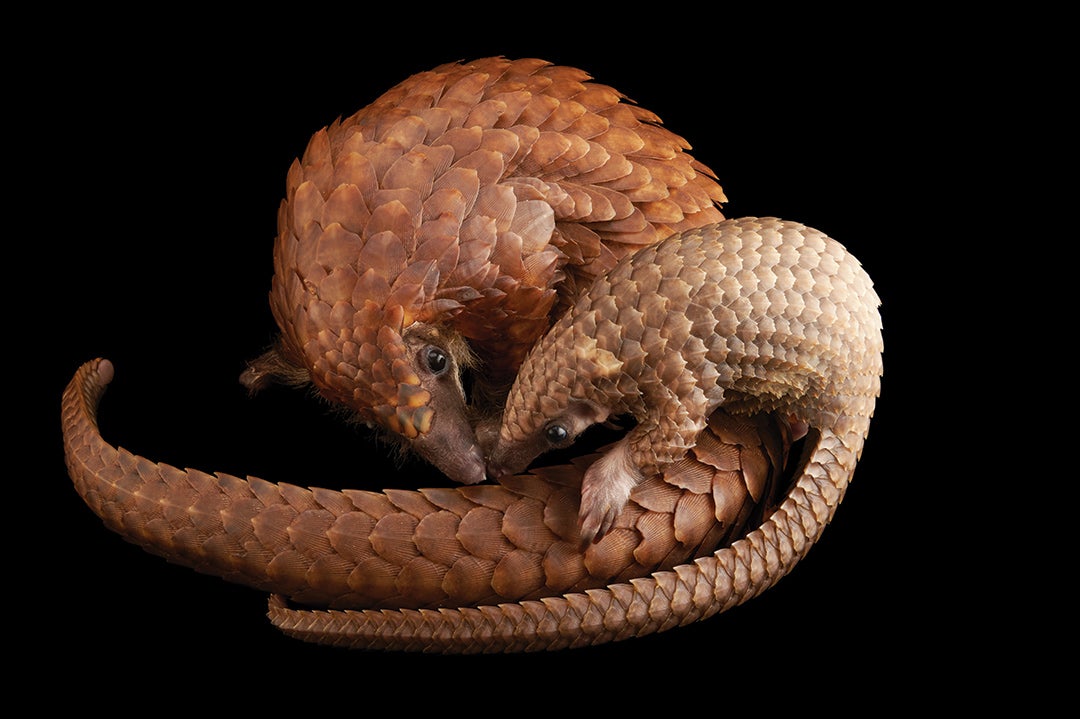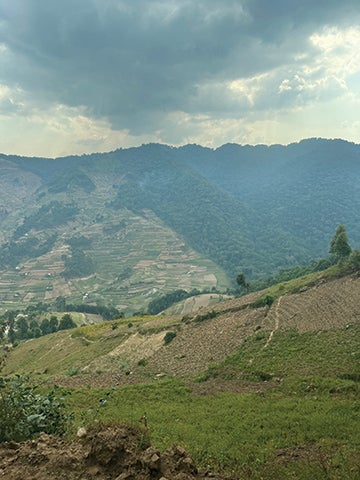The Pangolin’s Dilemma
Data from an extensive camera-trap survey has big implications for conservation policies.

Fall 2023
By Silvia Cernea Clark
A scaly anteater rummaging for termites along the edge of the Bwindi Impenetrable National Park in Uganda should shuffle closer to its center: According to a recent study of tropical mammals, protected areas aren’t really protected along their perimeters. The scaly anteater, or white-bellied pangolin, is better off in the depths of the tropical forest, where habitat fragmentation is low. That’s because specialist species like the pangolin, which only thrive in specific habitats, are generally more susceptible to the negative impacts of activities like hunting and agriculture than generalist species, which thrive in diverse habitats.
But even a generalist like the tayra — a dog-sized omnivore in the weasel family that can exploit forests and croplands for any number of menu items, from small mammals and reptiles to fruit — doesn’t do well near the edge of a protected zone if human population density is high in the vicinity.
While some of these facts may seem obvious, the data was lacking until recently. Thanks to the most geographically extensive and long-term camera-trap survey to date, which was quantified and analyzed in part by Rice ecologist Lydia Beaudrot, we now have actionable data to inform decisions on conservation policy. Understanding species-specific responses to different anthropogenic stressors can help set conservation priorities and guide protected-area management — both locally, by focusing on the most vulnerable species in a region, and globally, by highlighting how landscape-scale factors impact biodiversity beyond the protected perimeter.
Comprised of millions of images collected from over 1,000 sites, the data sheds light on how factors like human population density and habitat fragmentation impact 159 mammal species.

In her early fieldwork days, Beaudrot recalls “chasing monkeys around the forest from sunup until sundown, studying their behavior.” Working in different forests around the world got her thinking about ecosystems: “I’m an ecologist by training, and part of my graduate training was a lot of work in statistics. Ecology is a pretty quantitative field and becoming more so. Along the way, I transitioned from doing a lot of the fieldwork to working with a lot of data from the field.”
That transition was due in part to Beaudrot’s involvement with a large-scale network of research stations that agreed to implement a consistent data-collection protocol as part of a partnership between Conservation International, the Wildlife Conservation Society and the Smithsonian Institution. After several years, the network had assembled “a phenomenal data set unlike anything attempted before,” Beaudrot says. Comprised of millions of images collected from over 1,000 sites, the data sheds light on how factors like human population density and habitat fragmentation impact 159 mammal species in 16 protected areas across three biogeographic regions.
Over the next few years, knowing how human activity impacts species like the pangolin and the tayra will inform policymaking for the nearly 200 countries that have pledged to designate 30% of the Earth’s surface as protected by 2030 — the so-called “30 by 30” agreement reached at the United Nations biodiversity summit in Montreal in 2022. Biodiversity is tied to the health of the planet in ways that affect us, too. “We have to think about the situation holistically,” Beaudrot says.
“Conservation is going to work best when it’s tackled in specific contexts and in concert with the people who live there so as to create win-win situations for both the people and the wildlife.”
Lydia Beaudrot is assistant professor of biosciences at Rice.
